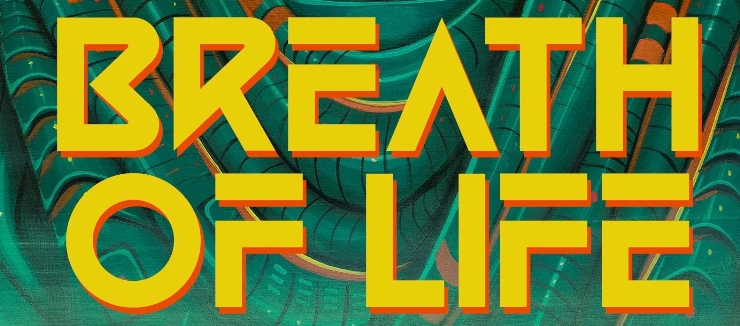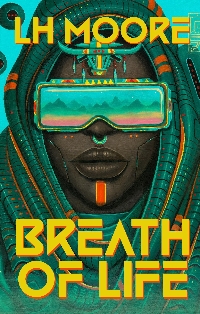Review: Breath of Life by LH Moore

I received a free copy of this book from the publisher in return for an honest review.
‘Breath of Life is a collection of the works of author and poet LH Moore, whose history- and Afrofuturism-inspired short stories, poetry, and essays move between and blur the lines between horror, science fiction, and fantasy.
‘With themes of family and identity, rooted solidly in history and imagining the unknown – both here on Earth and beyond – Breath of Life is an exploration of the unexpected.’

Breath of Life, by LH Moore, is a slim volume that nonetheless packs a lot in. The nine horror/sci-fi stories cover the past, present, and future, and take place in the US, under the sea, and on other planets. We encounter witchcraft, monsters, vampires, body horror, and more besides. There are two essays, and a few poems as well.
I really enjoyed Breath of Life. Moore’s writing is vivid and evocative throughout, and I look forward to reading more of it in the future.
Something that particularly stood out to me (and tickled my funny bone) was how, in some of the stories, supernatural events were presented as so run-of-the-mill. For example, in A Clink of Crystal Glasses, three adolescent girls are on the brink of learning something extraordinary about themselves – but in the meantime, it’s business as usual.
In Roots On Ya, meanwhile, the healer who comes to the aid of a girl who’s vomiting minibeasts and snakes has an amusingly weary, “just another day in the office” tone. He’s established so well as a character in the limited space of a short story, I’d happily read a whole novel from his perspective about the things he’s seen.
Another thing that struck me was the author’s remarkable skill for building up suspense. In A Clink of Crystal Glasses and Here, Kitty in particular, she just keeps piling on the tension right up to the reveal at the end, and I was on absolute tenterhooks.
The science fiction stories in the collection brought up very different – but equally welcome – feelings, and showcase the breadth of Moore’s talent. Rule of Thirds, where an imperilled diver is rescued by a mysterious creature from the deep, filled me with the same sense of wonder I get from Becky Chambers’ writing and Doug Johnstone’s Enceladons books.
In A Place Called Home, set in a future where Earth is no longer habitable and people have been forced to settle elsewhere, members of a family experience a range of emotions when they have to quickly evacuate the planet they’ve lived on for two years. As well as being an imaginative and absorbing story, it serves as a reminder that anyone can become a refugee, there is no Planet B, and that no matter where “home” is, humans will continue to imbue it with meaning and form attachments.
Moore’s non-fiction pieces are also interesting and thought-provoking. On Vision and Audacity, which closes the collection, is an optimistic and rousing call to under-represented science fiction, horror, and fantasy writers.
Moore highlights how BIPOC and LGBTQIA+ authors can not only refresh these genres with unheard stories and perspectives, but also help readers in their demographics feel represented. Moore, of course, walks the walk with the stories in this collection, whether that’s explicitly through African-American folklore, settings, and viewpoints, or simply by having main characters who happen to be Black.
This – and Moore’s experience of the disbelief she encounters when telling people she writes speculative fiction – put me in mind of a couple of articles I’ve read recently about the expectation that authors of colour primarily write “issues” books (often with blobby cover art), when that’s not necessarily what they want to write. Publishing may have become more diverse in recent years, but it can’t pat itself on the back until an under-represented writer with a great story can bank on the reception and treatment of a white, straight, middle-class writer with a great story.
Breath of Life is an enjoyable and skilfully-written capsule collection that covers a great deal of ground.